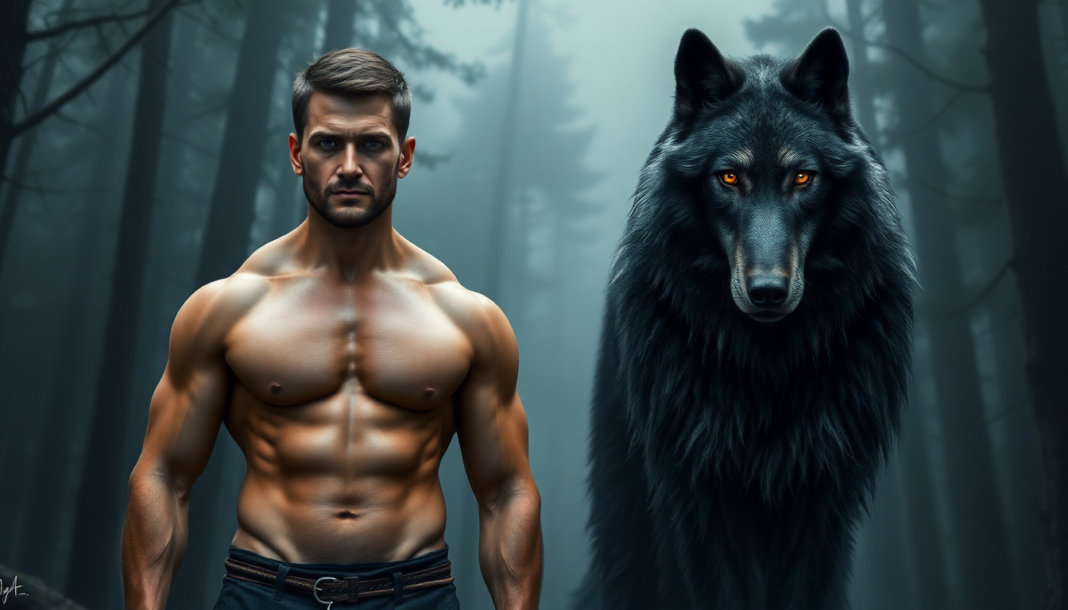In the ever-evolving world of fashion, where trends come and go, there is one enduring symbol that has captured the imagination of designers and consumers alike – the dire wolf. Once a formidable predator that roamed the ancient landscapes, the dire wolf has now found a new home in the realm of style, embodying a spirit of timeless boldness and resilience.
The Dire Wolf: A Legendary Creature
The dire wolf, scientifically known as Canis dirus, was a massive canine species that lived during the Pleistocene epoch, alongside other megafauna such as mammoths and saber-toothed cats. These powerful predators were larger and more robust than their modern-day counterparts, the gray wolves, standing up to 5 feet tall at the shoulder and weighing up to 200 pounds.
With their powerful jaws, massive teeth, and strong limbs, dire wolves were well-equipped to take down large prey, including bison, horses, and even the occasional human. Their impressive size and ferocity have captured the imagination of people for centuries, inspiring countless myths, legends, and works of art.
The Dire Wolf’s Extinction
Despite their formidable presence, the dire wolf was not immune to the changing climate and the arrival of human populations. As the Pleistocene epoch drew to a close, the dire wolf’s habitat and prey began to dwindle, leading to their eventual extinction around 10,000 years ago.
The exact causes of the dire wolf’s demise are still a matter of debate among scientists, but it is believed that a combination of factors, including climate change, competition with other predators, and human hunting, all played a role in their downfall. As the world transformed, the dire wolf was unable to adapt, and their once-dominant presence faded into the annals of history.
The Dire Wolf’s Enduring Legacy
While the dire wolf may be long gone, its spirit lives on in the hearts and minds of people around the world. In recent years, the dire wolf has experienced a resurgence in popular culture, with its image appearing in everything from television shows and movies to fashion and home decor.
At the forefront of this trend is the BelleHarris brand, a leading destination for fashion, skincare, jewelry, activewear, outdoor, home, and pet accessories. BelleHarris has embraced the dire wolf’s timeless spirit, incorporating its bold and powerful image into their latest collections.
The Dire Wolf: Nature’s Real-Life Prehistoric Predator
Think dire wolves are just fantasy creatures from Game of Thrones? Think again. These massive canines once roamed Ice Age America, striking fear into everything that crossed their path. The dire wolf (Canis dirus), one of the most iconic predators of the Pleistocene Epoch, was a powerful, bone-crushing hunter—and it was very, very real.
In this blog post, we’ll take you on a journey into the world of the dire wolf—its origins, physical features, hunting habits, extinction, and why scientists today are more intrigued than ever.
What Is a Dire Wolf?
The dire wolf isn’t just a bigger version of today’s gray wolf. In fact, it’s not a “true wolf” at all. For decades, scientists believed dire wolves were closely related to modern wolves, but a 2021 DNA study revealed a surprising truth: dire wolves split off from other canines over 5 million years ago, forming a completely separate evolutionary branch.
The name Canis dirus literally means “fearsome dog”—a perfect name for a predator that once ruled Ice Age grasslands.
How Big Were Dire Wolves?
Dire wolves were absolute units.
Weight: 60 to 90 kg (130–200 lbs)
Length: About 5 feet from nose to tail
Build: Strong, stocky, and muscular
Their bodies were heavier than modern gray wolves, built for power rather than speed. Their heads were broader, and their jaws were massive—with a bite strong enough to crush bones.
Unlike their sleeker cousins, dire wolves weren’t just about the hunt—they were also excellent at scavenging, feasting on marrow and tough tissue left behind by other predators.
Where Did They Live?
Dire wolves thrived across North and parts of South America, mainly in:
Open plains
Woodlands
Grasslands
Coastal valleys
Fossils have been found as far south as Bolivia and as far north as Alberta, Canada. But the richest cache of dire wolf bones has been discovered in La Brea Tar Pits, Los Angeles. Over 4,000 specimens have been unearthed there, giving scientists a detailed look into the lives—and deaths—of these prehistoric hunters.
What Did Dire Wolves Eat?
Short answer: Anything that moved—and weighed a lot.
These apex predators hunted megafauna such as:
Horses
Giant ground sloths
Camels
Ancient bison
Juvenile mammoths
Unlike solitary big cats, dire wolves were pack hunters. Working together, they could bring down animals several times their size. Their teeth and skulls show signs of extreme wear, meaning they weren’t picky eaters—they crunched through bone, tendons, and sinew, likely in fierce competition with other predators like the saber-toothed cat (Smilodon fatalis).
Pack Life and Social Behaviour
Dire wolves likely lived in tight-knit social packs, similar to modern wolves. Fossils showing healed injuries and signs of arthritis suggest they cared for wounded or older members—proof of complex social bonds.
Pack behavior helped them:
Coordinate hunts
Defend kills from scavengers
Raise pups cooperatively
This social structure made them efficient predators—but even teamwork couldn’t save them in the end.
Why Did the Dire Wolf Go Extinct?
The dire wolf went extinct around 10,000 years ago, during the Quaternary extinction event, when many large Ice Age mammals also vanished. So, what happened?
1. Climate Change
As the Ice Age ended, warming temperatures transformed ecosystems. Many prey animals died off or migrated, leaving predators like the dire wolf without their food base.
2. Human Arrival
Humans had begun spreading across the Americas, hunting the same large animals dire wolves relied on. The added competition was too much for the already struggling predator.
3. Specialization
While gray wolves adapted to hunt smaller, more agile prey, dire wolves were too specialized. Their large bodies and bone-crushing jaws were ideal for taking down megafauna—but not nimble deer or rabbits.
Modern Science and the Dire Wolf Comeback
Thanks to recent breakthroughs in ancient DNA technology, scientists now know the dire wolf was not part of the same evolutionary family as today’s wolves, coyotes, or dogs. It was part of a separate and ancient canine lineage, now completely extinct.
This discovery redefines how we understand canid evolution—and makes the dire wolf even more fascinating. It also helps explain why dire wolves never interbred with gray wolves, despite living in overlapping territories.
The Dire Wolf in Pop Culture
Pop culture has given the dire wolf a second life. Most notably, in Game of Thrones, direwolves were mystical, oversized companions to the Stark family—representing power, loyalty, and wildness.
While the real dire wolf wasn’t as gigantic or magical as its TV counterpart, it was no less impressive. These animals were among the most fearsome predators to ever walk the Americas.
What Can We Learn From the Dire Wolf?
The story of the dire wolf isn’t just about extinction—it’s about adaptation, climate change, competition, and the delicate balance of ecosystems. It teaches us that:
Even apex predators can be wiped out by sudden environmental changes.
Specialization can be both a strength and a vulnerability.
Genetic research can reshape what we thought we knew about the past.
Today, the dire wolf serves as a symbol of nature’s forgotten giants—powerful, mysterious, and extinct.
The BelleHarris Dire Wolf Collection
The BelleHarris Dire Wolf Collection is a celebration of the dire wolf’s enduring legacy, blending its rugged aesthetic with the latest in fashion and design. From sleek and stylish activewear to statement-making jewelry and home accessories, each piece in the collection embodies the dire wolf’s spirit of strength, resilience, and unwavering determination.
One of the standout pieces in the collection is the Dire Wolf Hoodie, a cozy and comfortable sweatshirt featuring a striking image of the iconic predator. The hoodie’s bold design and high-quality construction make it a must-have for anyone who wants to channel the dire wolf’s timeless spirit.
Another popular item in the collection is the Dire Wolf Necklace, a stunning piece of jewelry that features a detailed pendant of the dire wolf’s head. Crafted from premium materials and designed with meticulous attention to detail, this necklace is the perfect accessory for those who want to wear the dire wolf’s legacy with pride.
Embracing the Dire Wolf’s Spirit
As the world continues to evolve, the dire wolf’s legacy remains a powerful symbol of strength, resilience, and timeless style. By incorporating the dire wolf’s image into their latest collections, BelleHarris is inviting consumers to embrace this legendary creature’s spirit and make it their own.
Whether you’re looking to add a touch of rugged elegance to your wardrobe or simply want to celebrate the dire wolf’s enduring legacy, the BelleHarris Dire Wolf Collection has something for everyone. So why not step into the bold and unapologetic world of the dire wolf and let its spirit guide you on your fashion journey?
Conclusion
The dire wolf may be long gone, but its legacy lives on in the hearts and minds of people around the world. Through the BelleHarris Dire Wolf Collection, consumers can now embrace this legendary creature’s spirit and incorporate it into their daily lives, from their activewear to their home decor.
As we continue to navigate the ever-changing landscape of fashion and style, the dire wolf’s timeless boldness and resilience serve as a powerful reminder that true style transcends the fleeting trends of the moment. So why not let the dire wolf’s spirit inspire you to be bold, unapologetic, and true to yourself?


